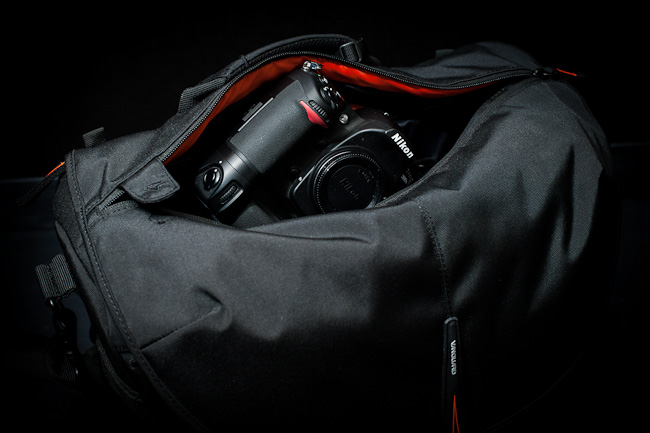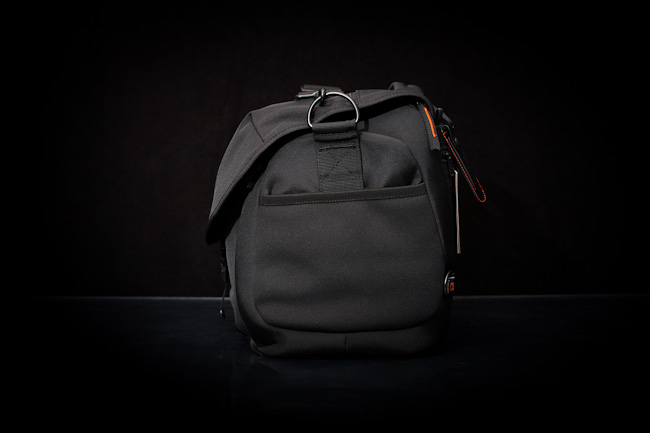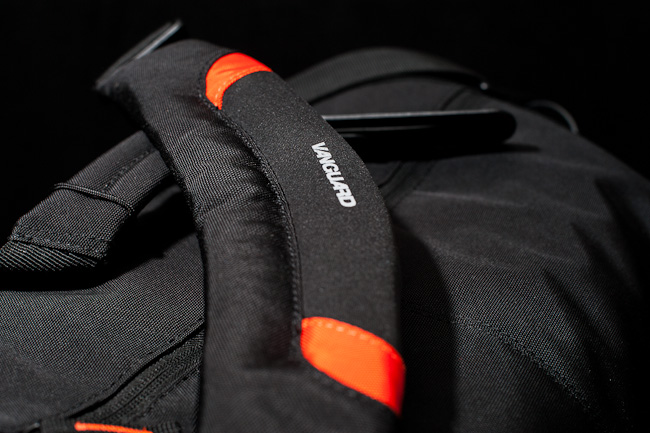 If you are in the market for a large modular camera bag that holds a lot of equipment and is easy to work from, then the Heralder 38 from Vanguard deserves your undivided attention. The 38 is not a bag you would carry around with you everyday, it's a bag you would take on a shoot, especially if you need everything but the kitchen sink. This review is a little overdue, but I really wanted to give the 38 a proper field test to see just how good it was. When Vanguard sent me this bag, I was a bit surprised how big it was. I had expected something smaller, but as soon as I opened the box I was impressed with both build quality and features.
If you are in the market for a large modular camera bag that holds a lot of equipment and is easy to work from, then the Heralder 38 from Vanguard deserves your undivided attention. The 38 is not a bag you would carry around with you everyday, it's a bag you would take on a shoot, especially if you need everything but the kitchen sink. This review is a little overdue, but I really wanted to give the 38 a proper field test to see just how good it was. When Vanguard sent me this bag, I was a bit surprised how big it was. I had expected something smaller, but as soon as I opened the box I was impressed with both build quality and features.
Exterior The outside surface of the bag is made of a tough black nylon that should wear well through the years. The zips have heavy duty black tabs with a single orange stripe on each that means seeing the zippers in the dark won't be a problem. The rear of the bag has a zipped pouch that contains a rain cover tethered by an elastic cord. The rain cover struck a chord with me as I recently had a shoot in heavy rain and the bag I was using got soaked right through. The 38's rain cover pouch is also big enough for an iPad. Another welcome feature on the back is the built in strap that allows the bag to be slipped over the handle of larger rolling camera bags or suitcases. There are also ICS compatible D rings and loops to tie the bag down.
On one side of the bag there's a large neoprene pouch that could easily be used to store accessories or a place to keep a water bottle. I found it to be most useful as a lens pouch for swapping lenses on the go. Round the opposite end there are three handy straps that can take lens pouches with slip lock attachments. I tried attaching a couple of mine and they were very safe and secure. I would recommend lens pouches with double velcro locking. I'd love a slip lock attachment for my Zoom audio recorder so that it could hang it on the side of the bag and collect ambient sound.
The top lid functions in two ways. The first is a zip that runs across the length of the bag and is used for quick access and probably the one that you would use most when shooting with the bag on your shoulder (see photo at the top of this post). There's also a magnetic flap to secure the zip when closed (photo above). The second way the lid functions is to lift it right over, which gives complete access to everything inside. To open it this way, you unclip the plastic fastener and then open the zip that runs from the back of one side to the back of the other side. The zip is also under the flap of the lid, which although makes it a little awkward to find, it does add a large amount of weather proofing. I tend to use the clip when I'm shooting but also close the zip when the shoot is complete.
One of the best features on the outside of the bag is a tripod holder that tucks away when not in use, in fact you wouldn't know it's there. My tripod is old, large, chunky and heavy, but the 38 carried it without any problem. This feature alone would make it a great bag for landscape photographers.
Interior Inside the Heralder 38 is a four section memory card storage pouch on the underside of the lid. There is also a section at the front that would take an iPad, some pens and some odds and ends in a transparent zipped pouch. The rest of the inside consists of two padded sections that can be removed if you need to utilize as much space as possible. I would liked to have seen more padding on the bottom of the bag when the inserts are removed, although to be honest it can't say I'd ever use it without inserts.
The insert at the rear is big enough to take a 15" laptop and also has a flap that can be closed and secured by Velcro, so you could easily use this as a separate carry around case for your laptop. The main insert can be divided into eight sections that are deep enough for a 70-200 f2.8 lens. The padded dividers Velcro to the sides of the insert, so the configurations are vast. My one gripe with this bag is that if you shoot with primes (as I do), a 35mm and a 50mm could fit stacked in one compartment. So my one wish for this bag would be for Vanguard to include eight small square dividers and two oblong ones. Then smaller lenses could be stacked on top of each other with these smaller inserts attached by velcro between them without the risk of scratching or denting. I tried it out with pads from another bag and it let me pack even more lenses. Similarly, oblong pads could be used to sit on top of camera bodies to allow light items to be placed on top.
It's amazing how much equipment the Heralder 38 can hold, but it's also amazing how comfortable it is to carry. This is mostly thanks to the heavily padded shoulder strap. There's obviously a lot of thought went into designing and manufacturing this bag. If you're a wedding photographer, it's a great bag to keep all of the days kit in the back of the car and use it to feed a smaller bag for different parts of the wedding.
The photo above shows the gear that I was carrying in the Heralder 38, but it was by no means full. The 70-200mm f2.8, 85mm f1.4 and the 35mm f1.4 are quite chunky lenses. In fact I have a couple of bags that won't accept the 85mm because of the diameter. So to come back to where I started. If you're in the market for a large camera bag, The Heralder 38 is definitely worth checking out. You can see more of this bag and others like it at the Vanguard website and you can buy it from Amazon UK or from B&H in the US.

























